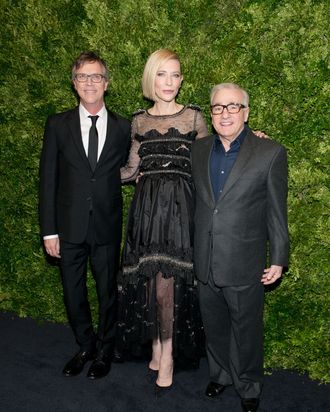
When we first see Cate Blanchett and Rooney Mara, the leads in Carol, it’s from afar. The film begins following a man down the street until he gets to a restaurant and runs into their characters, Carol and Therese. From that moment, the perspective switches, telling the rare story of two multidimensional women falling in love from the point the view of the women themselves.
The idea was to have a secondary character interrupt a conversation between the characters in the background, who you’d then realize “are actually the central figures of the film,” director Todd Haynes told the Cut last night at MoMA’s benefit honoring Cate Blanchett. It’s something he got originally from Brief Encounter, a 1945 film that, he says, is a classic love story but still makes you ask, “Whose story is this?” You have to get through a few diversions to find out, and he tried to mirror that structure in Carol, moving on from the man to Mara’s young character, Therese.
“Ultimately, it begins as Therese’s point of view, and we’re following Therese, but by the end of the film that changes, and it’s Carol’s point of view that takes us back to that same conversation that was interrupted in the beginning of the movie,” he said. “We understand the meaning of that conversation, and what was at stake with it, but the points of view have shifted at that point,” and “we’ve now come full circle” — making a rare movie that subverts the male gaze in the process.

